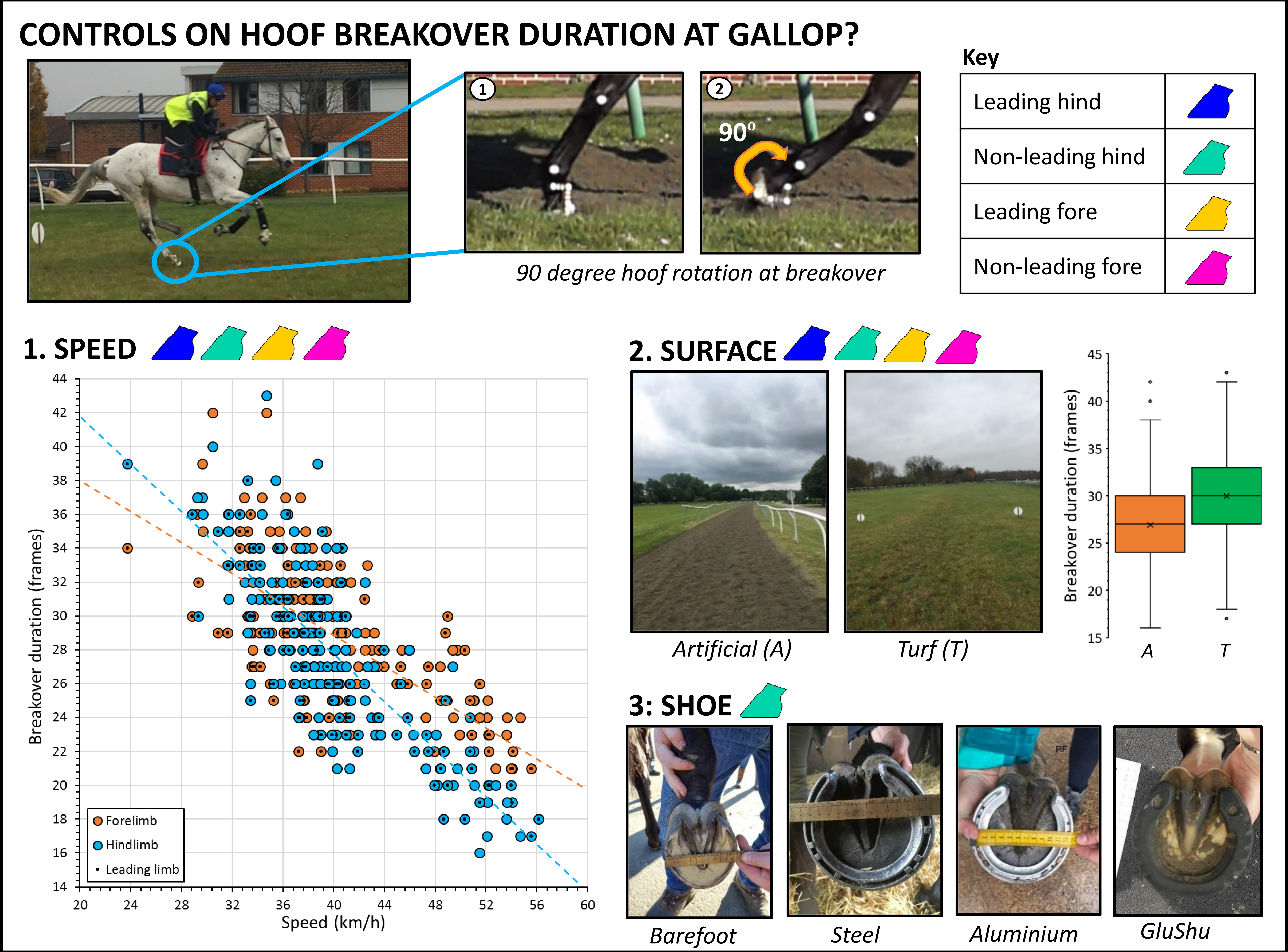Understanding the effect of horseshoe-surface combinations on hoof kinematics at gallop is relevant for optimising performance and minimising injury in racehorse-jockey dyads. This intervention study assessed hoof breakover duration in Thoroughbred ex-racehorses from the British Racing School galloping on turf and artificial tracks in four shoeing conditions: barefoot, aluminium-rubber composite (GluShu), aluminium and steel. Shoe-surface combinations were tested in a randomized order and horse-rider pairings (n=14) remained constant. High-speed video cameras (Sony DSC-RX100M5) filmed the hoof-ground interactions at 1000 frames per second. The time taken for a hoof marker wand fixed to the lateral hoof wall to rotate through an angle of 90 degrees during 384 breakover events was quantified using Tracker software. Data were collected for leading and non-leading front and hind limbs, at gallop speeds ranging from 23–56 km h-1. Linear mixed-models assessed whether speed, surface, shoeing condition or any interaction between these parameters (fixed factors) significantly affected breakover duration. Day and horse-rider pair were included as random factors and speed was included as a covariate. The significance threshold was set at p<0.05. For all limbs, breakover times decreased as gallop speed increased (p<0.0005), although a greater relative reduction in breakover duration for hindlimbs was apparent beyond approximately 45 km h-1. Breakover duration was longer on turf compared to the artificial surface (p≤0.04). In the non-leading hindlimb only, breakover duration was affected by shoeing condition (p=0.025) and an interaction between shoeing condition and speed (p=0.023). Future work seeks to relate these results to hoof accelerometer data.

